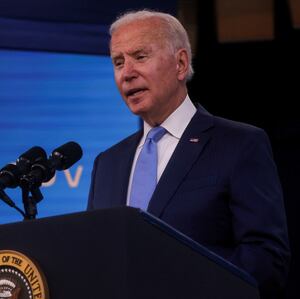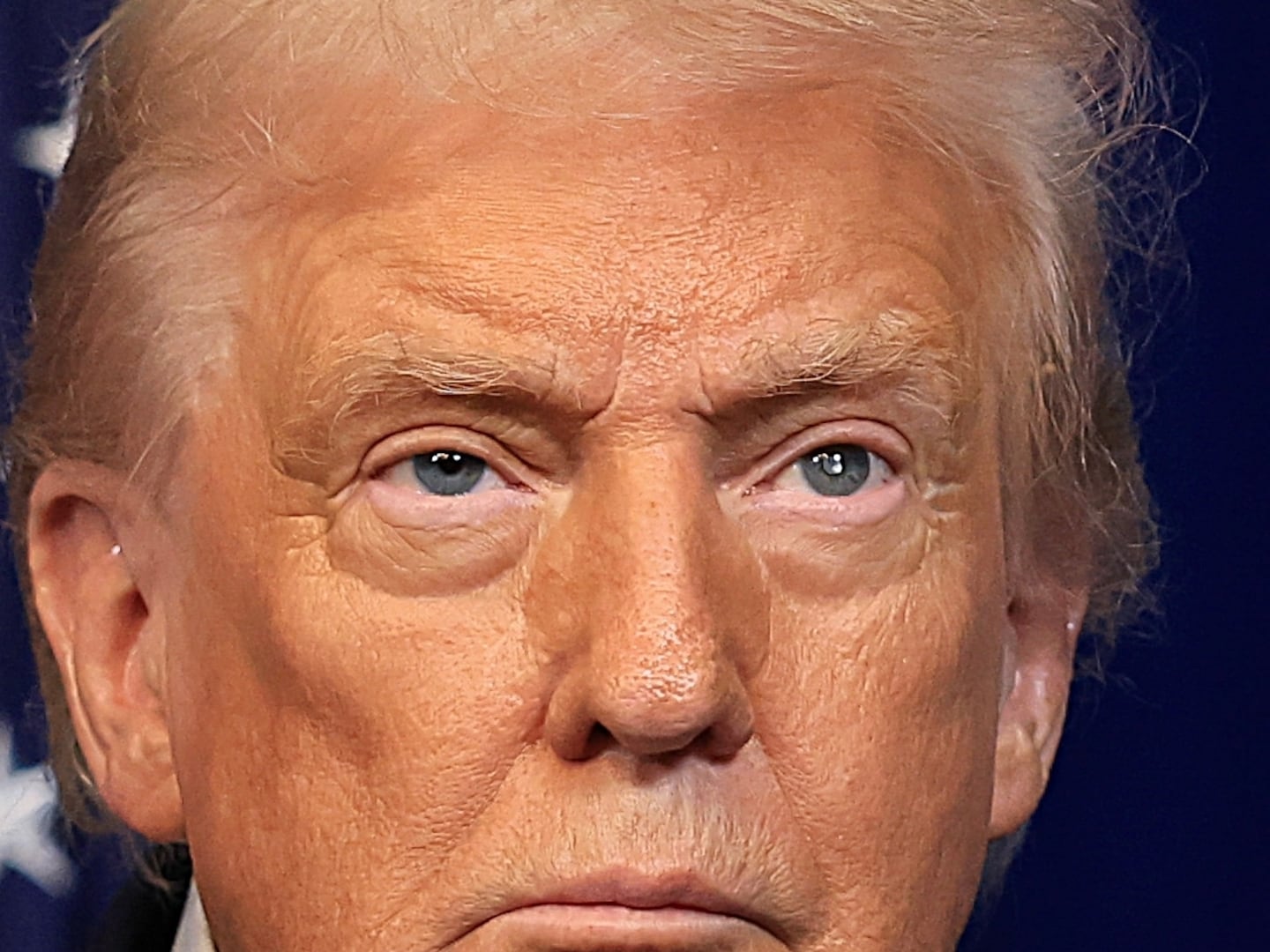The winter COVID surge has already begun.
A steadily accelerating increase in cases in countries all over the northern hemisphere is a chilling reminder, two years after the novel coronavirus was first detected, that the pandemic is seasonal. When it gets colder and people crowd indoors, the SARS-CoV-2 virus transmits more easily and infections spike.
But the third COVID winter is the first winter where much of the world has all the tools it needs to soften the worst impacts of a fresh wave of cases. Safe, effective and—in many countries—plentiful vaccines, as well as antiviral drugs and rapid tests.
Even as epidemiologists watch case numbers tick upward as temperatures drop, there’s reason for hope. “The COVID-19 surge this winter should in no way replicate what we experienced last winter,” Anthony Alberg, a University of South Carolina epidemiologist, told The Daily Beast.
There’s even better news. It’s possible COVID could become endemic in some countries in the coming months. That is, a disease that’s present and unshakable, but totally manageable without massive disruptions to work, education and travel.
In many places, COVID cases were just coming down from their recent Delta variant-driven high when the unavoidable winter surge began. Germany in the last week registered a record 38,000 new infections a day. The Netherlands likewise set a record—more than 13,000 new cases a day. Belgium’s 10,000 fresh cases per day isn’t a record, but it’s close.
The winter surge is in its early days in the United States. The Delta wave peaked at around 160,000 new cases a day in the U.S., then, by late October, declined to 70,000 daily additional infections. And that’s where the new case rate stalled for a couple weeks. Now the rate is increasing again. Health officials are registering 80,000 cases a day—and the trend line is bending upward, fast.
But the case numbers are deceptive. For one thing, many of the new infections across the hemisphere are asymptomatic. In those cases, authorities only know about them because testing is more readily available, and faster, than ever before.
And while infections are spiking, deaths aren’t spiking—at least not nearly as much. “In some places, cases will be close to what we have seen last summer, but deaths won’t be as high,” Ali Mokdad, a professor of health metrics sciences at the University of Washington Institute for Health, told The Daily Beast.
Deaths are what experts call a “lagging indicator.” That is, an increase in deaths usually lags behind an increase in infections, by up to several weeks. Even taking into account a possible lag, every indication is that deaths aren’t increasing by all that much in some of the countries that are suffering the biggest spikes in infections.
Take Germany, which is setting new records for COVID cases but, so far, has tallied just 170 or so deaths a day from the virus. Compare that to the country’s worst days for deaths, back in early January, when authorities counted 800 deaths a day for several days.
Right now the United States is losing a thousand people a day to COVID. Experts expect that number to rise, but still fall well short of the U.S.’s worst days—also back in January—when authorities tallied 3,400 deaths a day for a whole awful week.
Cases and deaths are decoupling, and it’s obvious why. Most well-off countries are vaccinating their populations at a steady clip. Health agencies in more and more countries are authorizing kids to get jabbed. Boosters are available. Vaccine-hesitancy is declining as government and business mandates force people to choose between their denialism and their jobs.
And when people do get infected and get really sick—either because they’re unvaccinated or the virus broke through their vaccine-induced immunity—doctors have options.
“We now have drugs that can prevent the development of severe symptoms if a person gets infected,” Edwin Michael, an epidemiologist at the Center for Global Health Infectious Disease Research at the University of South Florida, told The Daily Beast. They include monoclonal antibodies, Remdesivir, and, most promisingly, a brand-new antiviral drug from Pfizer that can slash the death rate from severe COVID.
The vaccines, with strong backing from antiviral drugs, are steering the industrial world toward endemicity, the point where COVID becomes just another disease that people control with vaccines and medication.
That doesn’t mean that restrictions on travel, businesses, and schools aren’t helpful. Indeed, many European countries have restored some limits on public gatherings as the winter wave rises. But every day of strong vaccine uptake means an earlier end to current restrictions—and a greater likelihood those restrictions won’t be necessary again.
The numbers in the United States are particularly encouraging. The most vaccine-friendly Americans got jabbed fast this spring. The vaccination rate peaked at 3.5 million people per day in mid-April.
But vaccination stalled this summer. A temporary drop in infections made the jabs seem less urgent, but vaccine-hesitancy was a factor, too. This spring, a third or more of Americans said they would never get vaccinated. Multiple recent polls indicate this proportion is dropping. In a Morning Consult poll last week, just 18 percent of respondents said they were unwilling to get vaccinated.
Experts point to a number of factors in this declining hesitancy. The more people who get vaccinated, the more the unvaccinated see that the jabs are safe and effective. But federal, state, and corporate mandates surely play a role, too.
The administration of President Joe Biden in September required federal contractors to vaccinate their employees. Two months later, the White House rolled out a new rule requiring all private employers with 100 or more employees to jab their workers, too. A federal court has put that rule on hold, meaning an appeal to the U.S. Supreme Court is likely. Even if the Supreme Court strikes down that rule, proliferating corporate mandates could take up the slack.
There’s a cumulative effect from the mandates, a drop in hesitancy and the recent decision by the U.S. Food and Drug Administration to authorize boosters for many Americans, as well as first doses for children over five years old. From a recent low of just half a million doses a day back in July, the vaccination rate has climbed to a healthy 1.2 million doses a day.
“The combination of vaccinating children, continuing to get vaccination rates up in older individuals and natural immunity from the substantial numbers of people who have already been infected now puts the long elusive herd immunity within reach,” Alberg said.
Today, 59 percent of Americans are fully vaccinated. And that percentage has been increasing by a point roughly every two weeks.
A vocal and sometimes violent minority might make it seem like the United States has an insurmountable anti-vax problem. It doesn’t. And as COVID surges in its third winter, vaccines are likely to keep a lot of people out of hospitals and morgues in the U.S. and other countries with high case counts. The SARS-CoV-2 virus isn’t endemic yet, but it’s getting closer, Alberg said. “We can confidently say that endemicity is now within reach.”
Mokdad is confident enough about endemicity in the United States that he’s even ready to mark it on his calendar.
“Our best long-term projection shows the decline [in cases] starting sometime in January or February will be sustained if people are getting vaccinated and boosted at the same rate as they are now,” he said. “We should get to endemic status some time this spring or summer.”









